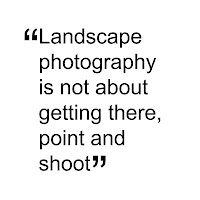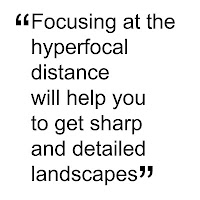 Landscapes photography might seem easy because your subject is there, waiting for you to arrive and shoot. That is absolutely wrong. Of course it might happen to show in the right place at the right time and find a magnificent view bathed by a perfect light. But it's one out of a million chance. Landscape photography, like every kind of photography, needs to be planned.
Landscapes photography might seem easy because your subject is there, waiting for you to arrive and shoot. That is absolutely wrong. Of course it might happen to show in the right place at the right time and find a magnificent view bathed by a perfect light. But it's one out of a million chance. Landscape photography, like every kind of photography, needs to be planned.
You have to know the place you are going to photograph, where the best spot is, where you take the most of the light accordingly to the time you are there
You have to know when you'll have the best light in that place, not only the best one of the day but also of the year.
You have to know how colours change during year and seasons.
You have to know how the weather will evolve and if it will affect your photographs.
 Natural light is a very good quality light but it has limitations as well, the most important being the fact that we cannot dispose of it any time we like. High sun light is perfect for taking saturated images, sunset and sunrise produce delicate and contrasty photographs; overcast days might produce dull photos but they are perfect if you want to reproduce details because light is even and no-directional; haze and mist can add strong mood to the images, as well fog when strong shaped subjects are portrayed.
Natural light is a very good quality light but it has limitations as well, the most important being the fact that we cannot dispose of it any time we like. High sun light is perfect for taking saturated images, sunset and sunrise produce delicate and contrasty photographs; overcast days might produce dull photos but they are perfect if you want to reproduce details because light is even and no-directional; haze and mist can add strong mood to the images, as well fog when strong shaped subjects are portrayed.
Graduated neutral density filters (GND) are a must to reduce the high contrast between the sky and the land (yes, you could bracket different exposed shots and produce an HDR image, but this option is only available for digital camera users). Sliding up and down the GND filter while taking a long exposure photo will help you to get better looking images: not all the zones of the picture need to be stopped down by the same value.
There are some filters that cannot be reproduced in editing softwares that you should carry with you while photographing landscapes: a Polarizing filter and a Neutral Density filter. The first one lets light of a specific polarization pass and block waves of other polarizations (which produces a colour saturation effect and removes reflections). The ND filters, especially the "Big Stopper" a 10 stop ND filter, allows you to take long exposure photographs in full sunlight without blowing the exposure.
 |
| Effect of Big Stopper filter at sunset |
No comments:
Post a Comment